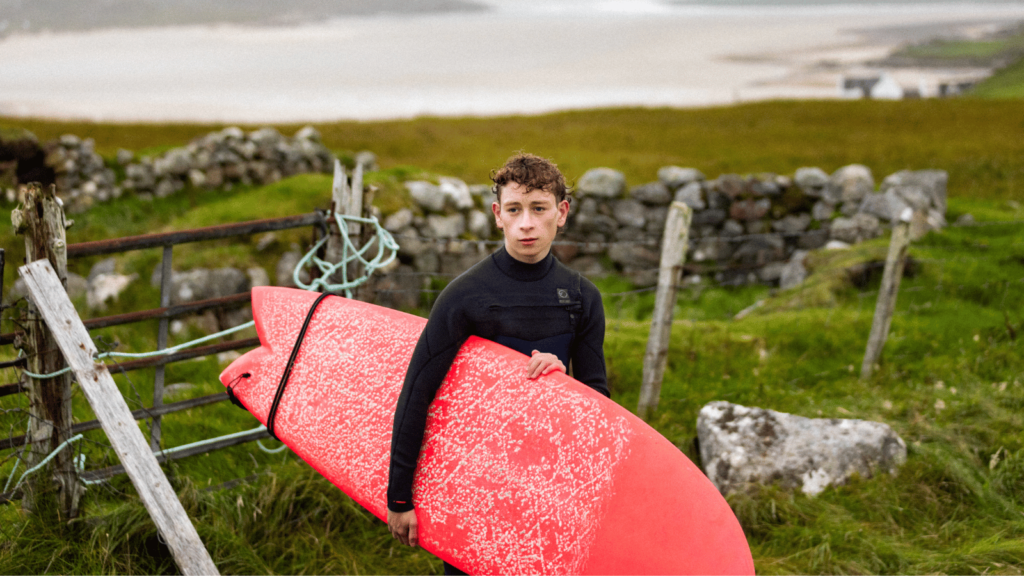“Does God have a penis?” is just one of the flummoxing philosophical conundrums brought up in Silent Roar, the debut feature film from Johnny Barrington. The film is unafraid to present surreal, mystical looks at themes of religion, sex, loss, and freedom. Filmed in 35mm, lending every shot an otherworldly and fuzzy feel as if the boundaries between one world and another are blending together, Silent Roar is a compelling experience that mixes the earthly with the magical.

Barrington’s film focuses on Dondo (Louis McCartney), a teenager on the Isle of Lewis who loves surfing and is struggling to accept the loss of his father at sea one year previously. After meeting the island’s new priest (Mark Lockyer) and spending more time with the rebellious but intelligent Sas (Ella Lily Hyland), he begins to experience visions and hallucinations that gradually push him away from others around him. A newfound, feverish obsession with faith and zealous levels of hope for his father’s return threaten to push Dondo over the edge.
Silent Roar is more spiritual than religious, despite Christianity being a pillar holding much of the small local community together. With long shots of almost empty landscapes, accompanied by the heavy, looming presence of Hannah Peel’s score, Barrington invites you into the world, leading you through various cosmic and emotional possibilities. It is a journey that pulls at Dondo, brought to life with powerful realism and passion by McCartney, who is increasingly unsure of his place and direction following his loss. The resulting story is almost perfectly paced, adding tragedy to Dondo’s character by the fact that his fate feels like such a natural outcome of what has happened.

As much as Silent Roar can be magical and sombre, it can also be incredibly funny. Hyland in particular steals the show, able to turn from seriousness to comedic charm with ease. Her growing bond with Dondo pulls at the heartstring while staying clear of full-blown romance. A scene involving her, a desperate crush, and a biology textbook gets the biggest laugh. Frank discussions of sex and young adult woes encourage parallels with Karen Maine’s Yes, God, Yes, which like Silent Roar involves the ruffling of religious feathers courtesy of discussions about sex. Unlike Maine’s film however, such questions seem intended here to deepen understanding of religion rather than to expose hypocrisy.
Throughout Silent Roar, blurring the lines of freedom and constraint, and of one world with another, feel as much a part of the Hebridean landscape as much as any result of Dondo’s trauma. It is refreshing to have a film that presents Scotland in a way that doesn’t equate lack of colour with lack of life or vitality. Many of the shots are grey and darkened, yet Ruben Woodin Dechamps’ cinematography injects an undercurrent of life and wonder under every frame. It is not just the land captured with mystique however. Shots on and in the water provide some of the most evocative moments for Dondo, his relationship with a group of surfers providing yet another sensation of mystery as the churning of the waves chillingly alters your perception of shadows and shapes.

A mixture of comedy, magic, and tragedy, Silent Roar is a triumphant story of loosening the shackles of whatever may be holding you back. It encourages you to lose yourself in the possibilities and hopes that come throughout life’s tribulations, so long as you don’t lose others while doing so. Beautifully filmed, impeccably performed, and smartly written, Barrington’s film breathes a new life into the Hebrides and could well find a place as an essential piece of British teenage drama viewing.
Silent Roar received its world premiere as part of the 2023 Edinburgh International Film Festival.
